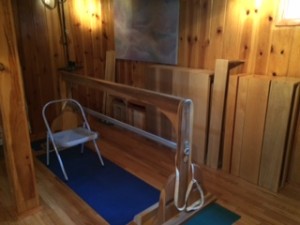One of the results of the recent election is that our food supply may be at risk. With mass deportations of immigrants there will not be enough workers to harvest food. The other part of the problem is the centralization of food production by industrial agriculture. When I was a growing up, lettuce and tomatoes were scarce in grocery stores in winter. Now they are abundant largely due to industrial agriculture. Eating seasonally will help to reduce the need to transport large quantities of summer foods from farms far away. Transporting food from long distances is highly polluting.
This winter I am experimenting with growing greens both outside, things like kale, and growing both lettuce and kale under light inside. I have harvested from both inside and outside. I can harvest enough lettuce for a salad every other day from my inside growing and the same from outside. As soon as the snow melts off of the outside beds later this week, I will begin harvesting from outside again.
Now is the time to start planning for next spring and summer’s growing season. Look at your yard. Where can you get rid of grass? Denver will pay you $2.00 a square foot to dig up your grass. That will enable you to water food not grass. I have been doing this for over 10 years. I have five 4′ by 8′ raised bed boxes and two 4′ by 4′ raised bed boxes in addition to an in-the-ground garden that is approximately 25′ by 5′. All of these growing areas are watered by individual drip systems which allow adequate watering while saving water.
By growing my own food, I now have a good supply of tomatoes and fruit in the freezer for the winter. There are many ways to preserve food. Canning, I only use pressure cooker canning for safety, especially at Denver’s altitude. This year I roasted tomatoes, peaches and plums which are now in jars and reusable silicone bags in the freezer. I also dried elderberries to be used for making elderberry syrup or adding to muffins. All of the items that are preserved came from my home micro farm.
Growing your own food is healthy both physically and mentally. Being outdoors I can observe nature as I garden. This year I saw many creatures that I have not seen before like a snail on a leaf that was smaller than a pinhead. One evening I saw very small black bees roosting huddled together on a blade of grass. The most spectacular creature which I had never seen before was a Black Witch Moth., the largest insect in North America. They are four to five inches across. The photo below is the Black Witch Moth.

Growing your own food is both practical and a nature adventure. If you have children, include them as it will prepare them for a lifetime of nature appreciation. If you are new to food growing, I am available for consultation. You can contact me at claudia@yogardenlife.com or text at 303.349.7583.


